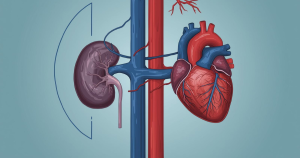Introduction: Why “Beyond Insulin” Matters
“Will I have to take insulin forever?” is a common concern when someone is diagnosed with type 2 diabetes. Insulin or other drugs are often necessary, particularly in the beginning. As a result of increasing dosages, side effects, weight gain, exhaustion, and diminishing returns, patients frequently become more dependent over time.
The good news: numerous clinical trials, meta-analyses, and lifestyle-medicine protocols now show that intensive lifestyle change can significantly reduce reliance on medications — sometimes to the point of remission.
This article complements our core topic, The Silent Killers: Your Comprehensive Guide to Preventing, Reversing, and Managing Type 2 Diabetes and Hypertension. Additionally, it functions as Supporting Article 2, which focuses on preventing, reversing, and managing Type 2 Diabetes and Hypertension.
Instead of rejecting pharmacotherapy, we aim for synergy and optimization: use medication when necessary, but let the foundations of lifestyle take the burden. This method lowers complications, enhances quality of life, and may be much more long-term viable.
Pillar #1: Nutrition as Medicine (Food First)
Your daily medication for type 2 diabetes is the foods you eat. You can significantly affect insulin sensitivity, blood sugar variability, and inflammation by choosing your nutrients, planning your meals, and modifying the ratios of your macronutrients.
Key strategies:
- Focus on whole foods, low glycemic load — vegetables, legumes, fiber-rich whole grains, nuts, seeds, moderate lean proteins, healthy fats.
- Limit refined carbohydrates, added sugars, and ultra-processed foods — these provoke rapid blood sugar spikes.
- Carb–portion control and consistent carbohydrate timing — spacing out carbs and avoiding “carb dumps” helps stability.
- Mind the fiber & prebiotic content — fiber (especially soluble fiber) slows absorption and improves gut microbiome health.
- Meal sequencing — starting meals with vegetables and protein can blunt post-meal glucose spikes.
- Intermittent fasting / time-restricted eating (if appropriate) — in some patients, a 12- to 16-hour daily feeding window may aid insulin sensitivity (but only under supervision).
“Food as medicine” interventions — e.g. plant-forward diets, Mediterranean-style, low-carb/low-glycemic diets.
In practice, our Nutrition & Wellness Counseling team works closely with patients to translate these strategies into a sustainable, culturally appropriate, delicious eating plan.
Pillar #2: Physical Activity & Structured Exercise
Exercise is a potent tool for enhancing insulin sensitivity, mitochondrial health, and skeletal muscle glucose uptake. It is not just a way to burn calories.
Key approaches:
- Aerobic (cardio) training: Aim for 150–300 minutes per week of moderate-intensity or 75–150 minutes of vigorous-intensity activity (e.g. brisk walking, cycling, swimming).
- Resistance / strength training: 2–3 sessions per week of weight training (bodyweight, machines, bands) to build lean muscle mass, which is critical for glucose storage.
- High-intensity interval training (HIIT) (if appropriate): short bursts of high effort can yield substantial metabolic benefits.
- Non-exercise daily movement: steps, postural shifts, standing desks, light walking breaks.
- Progressive loading and variation: gradual increases in difficulty, cross-training, mixing modes.
Multiple lifestyle intervention trials show that combining diet + exercise yields stronger glycemic control than diet alone. PMC+1
Pillar #3: Sleep Quality & Circadian Rhythm
Sleep is often the silent pillar that gets neglected — but poor sleep derails glucose regulation, elevates stress hormones (like cortisol), and worsens insulin resistance.
Key tactics:
- Aim for 7–8 hours of restorative sleep nightly — consistency matters more than occasional long sleeps.
- Maintain regular sleep-wake times: even on weekends.
- Optimize sleep hygiene: dark, cool, quiet environment; no screens 1 hour before bed; limit caffeine after midday; wind-down routine.
- Manage sleep disorders: screen for sleep apnea, insomnia, restless legs.
- Align eating and activity to circadian rhythms: e.g. avoid late-night heavy meals or high-sugar snacks.
Pillar #4: Stress Management, Mindset & Emotional Health
Poor metabolic outcomes are silently fueled by internalized diabetes distress, emotional dysregulation, and chronic stress. Stress increases adrenaline and cortisol, which promote insulin resistance and gluconeogenesis.
Key strategies:
- Mindfulness / meditation / diaphragmatic breathing daily short sessions help lower sympathetic tone.
- Cognitive Behavioral Techniques: reframing negative self-talk or “diabetes guilt.”
- Active stress regulation: yoga, tai chi, guided imagery, progressive muscle relaxation.
- Psychosocial support: counseling, peer groups, support partners.
- Resilience & growth mindset: using setbacks as data, not failure.
Research shows that sustained lifestyle behavior change often fails due to motivational fatigue, lack of support, or stress burden. MDPI
Pillar #5: Weight Management & Body Composition
For many patients, losing even 5–10% of baseline body weight leads to significant improvements in glycemic control, blood pressure, and lipid profile.
Key tactics:
- Lean mass preservation: combine calorie management with resistance training to avoid muscle loss.
- Slow, sustainable fat loss: avoid extreme diets; aim for 0.5–1% body weight per week.
- Body composition tracking: through bioimpedance, DEXA, or skinfolds rather than just scale.
- Behavioral modifications: mindful eating, hunger awareness, portion control.
- Periodic re-evaluation and adjustment: as metabolism changes, so must the strategy.
Pillar #6: Support, Accountability & Behavior Coaching
A change in lifestyle does not occur in a vacuum. The majority of people achieve success through community, accountability, feedback, and guidance.
Pillar in practice:
- Regular check-ins (weekly or biweekly) with a health coach, nurse, or physician.
- Shared medical appointments or group programs — peer support adds adherence.
- Digital tools and tracking: glucose apps, step trackers, food logs, alerts.
- Motivational interviewing, goal setting, relapse planning.
- Social support: family engagement, exercise buddies, community groups.
The U-TURN qualitative follow-up trial highlighted that support from healthcare professionals, social support, and sense of identity/acceptance are major drivers of long-term adherence. MDPI
Pillar #7: Continuous Monitoring, Adjustment & Feedback Loops
Even the best plan needs calibration. That means timely data, interpretation, adjustment, and feedback.
Core elements:
- Frequent glucose / continuous glucose monitoring (CGM) (if indicated)
- Periodic lab tests: A1c, fasting glucose, insulin, lipid panels, renal function, inflammatory markers
- Tracking secondary metrics: body weight, waist circumference, blood pressure, lipids
- Adjusting medications (de-prescribing or intensifying) based on trends
- Scheduled “refinement sessions”: monthly or quarterly to evaluate progress and obstacles
- Data-driven personalization: adjusting macronutrient ratios, meal timing, stress modules to individual response
How These Pillars Relate to Wellgen’s Services
Our lifestyle-based model is deeply integrated with your clinical needs. Here’s how:
- Nutrition & Wellness Counseling — Our registered dietitians and wellness coaches implement Pillar #1 with customized meal plans, portion strategies, and ongoing support.
- Lifestyle Modifications Program — This is the scaffold supporting multiple pillars: structured exercise, sleep coaching, stress regulation, behavior change, and long-term accountability.
- Diabetes & Endocrinology — As part of your medical care (including insulin or oral therapies), our endocrinologists supervise de-prescribing or adjustments in response to improvements that stem from lifestyle changes.
- Continuous monitoring and analytics — We offer or coordinate lab testing, remote glucose monitoring, and follow-up check-ins to feed the feedback loops.
- Support & coaching teams — Integrated teams (physicians, coaches, dietitians) help maintain momentum and troubleshoot personalization.
In short: these lifestyle pillars are not “extra,” they are core to how we stabilize type 2 diabetes for the long haul.
Summary & Call to Action
Increasing insulin dosages is not a lifelong requirement for people with type 2 diabetes. Beyond medication, the path to stabilization and remission necessitates deliberate, long-term lifestyle modification supported by these seven pillars:
- Nutrition as Medicine
- Physical Activity & Exercise
- Sleep & Circadian Health
- Stress, Mindset & Emotional Well-Being
- Weight & Body Composition
- Support, Accountability & Coaching
- Continuous Monitoring & Adjustment
Under the direction of our Diabetes & Endocrinology team, we at Wellgen incorporate these pillars deeply into our Nutrition & Wellness Counseling and Lifestyle Modifications services. Over years, not just weeks, we walk with you, adjust with you, and improve your approach.
If you found this article useful, feel free to share it with your network. And if you’re ready to take the next step:
- Download our 7 Pillar Stabilization Checklist
- Book a consultation with our diabetes & endocrinology team
- Enroll in our Nutrition & Wellness Counseling / Lifestyle Modifications pathway
Together, we’ll move beyond insulin to sustainable health, resilience, and freedom.




